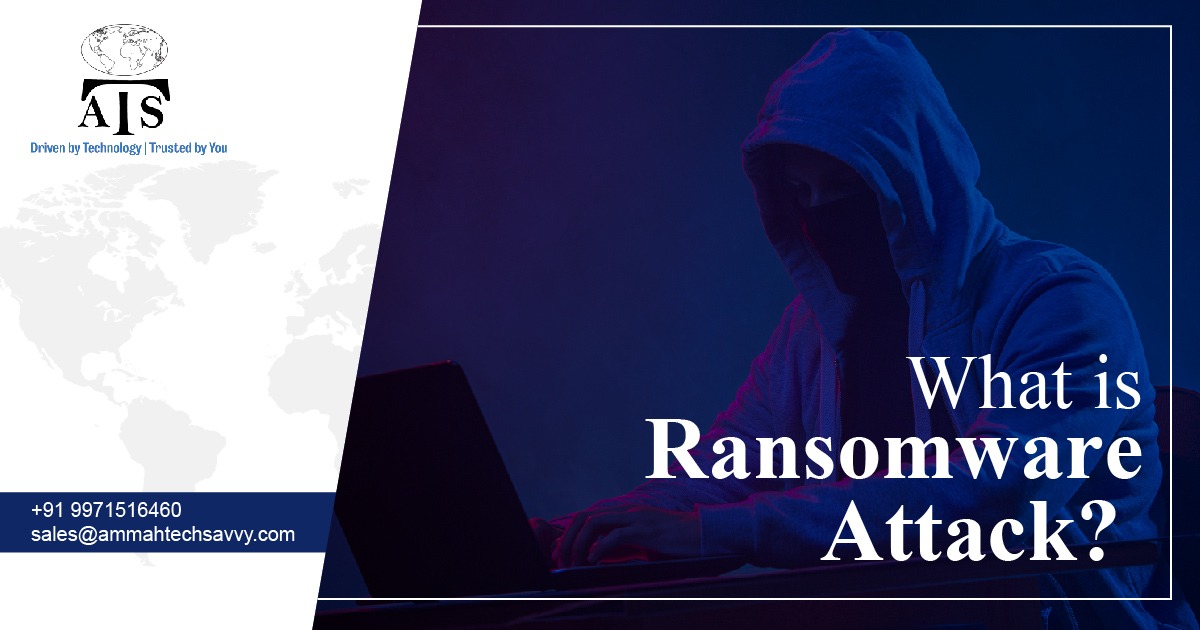What is Ransomware and How To Prevent From Ransomware Attack
The growth in the world of technology is taking place at a quicker rate along with the passage of time. With this extensive growth of technology having a ransomware defence strategy has become a priority for any individual or company. Companies put themselves at risk of losing important and confidential information without integrating ransomware into working systems. The risk of it is so high that a report has claimed that there was a ransomware attack every 11 seconds in the year 2021.
On the part of the companies data is the most valuable asset they own. Losing the data may lead to irreversible damage that could cripple an entire operation. Thus, before any potential threats have the opportunity to take advantage it is important on the part of the companies to stay proactive with the best ransomware protection practices.

What Is Ransomware?
In order to restrict data access to extort money from victims, the cybercriminals often use a binary encryption key and then infect a computer and subsequently hold sensitive data or personally identifiable information (PII) hostage until a fee, or “ransom” is paid. This method of holding the data in an ill-legal manner to acquire money from a person or an organization is known as ransomware.
The targets of the attacks by the attackers will mostly be businesses, hospitals, schools, or other organizations that rely on that information to function daily. The businesses can lead to permanent loss or exposure of confidential data when they fail to pay the asked ransom.
Types of Ransomware Attacks
Be it an individual user or a large corporation, the attack of ransomware can be on anyone. The attacks could lead to locking up individual files, like documents or images, to entire databases, leading to huge data breaches or exposure of sensitive, personal information.
The 4 major segments of ransomware attacks are,
Encryption
This is one of the most common types of ransomware attacks. In this method, encryption of data takes place which makes it impossible to unlock without a decryption key.
Lockers
This is another method of grabbing the money from you. In this method, the hackers restrict the use of your computer, making it impossible to work.
Scareware
This is one of the most popular yet the least known methods of illegal acquiring of money from users. In this method, there will be attempts to scare users into buying unnecessary software. In this type of attack, the pop-ups will appear on the computer or laptop screens of the users forcing them to pay to remove them.
What to do if you have been a victim of a ransomware attack?
It is still possible to become a victim of ransomware despite all t eh security measures. Immediately after becoming infected or attacked and the proper steps to limit the damage should also be on the list of your security check. The response procedures ahead of time and clear lines of emergency communication should be established by the organizations ahead of time so all users understand what to do if an attack occurs.
Some of the steps needed to be taken include,
Do Not Pay the Ransom
Doing this only encourages attackers to continue their criminal activity and thus the experts and law enforcement agencies strongly advise against paying the ransom. There happens to be no guarantee the attacks will provide a working decryption key and in some cases may continue to blackmail further. Thus, it is advised to inform the cyber security cell of the police department before taking any steps by yourself.
Isolate the Infected Devices
The individuals or the organization should immediately disconnect their device from the network and all wireless connectivity in order to prevent further breaches of security. Isolation can limit the scope of infection in the network even though the ransomware may have already affected other users.
These are some of the steps that users can take up when their systems have been under the attack of ransomware. It is important for the users to be aware and take precautionary steps during the time of the attack and not to panic and pay the ransom which does not guarantee all receiving back the data in the first place.
To Know More VIsit : Ammah Techsavvy
